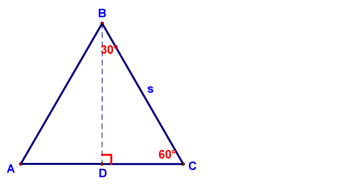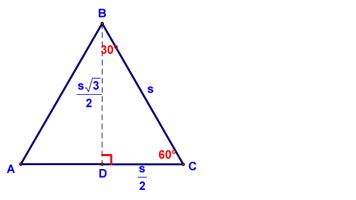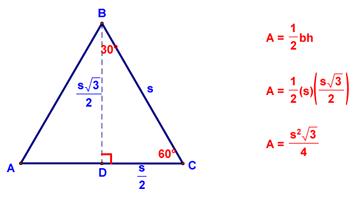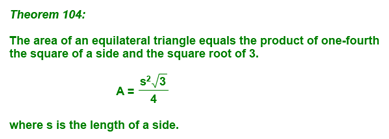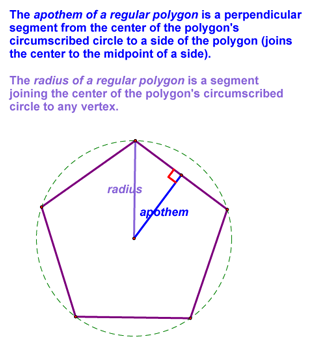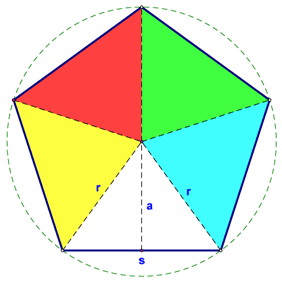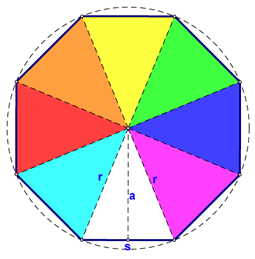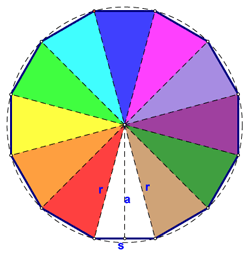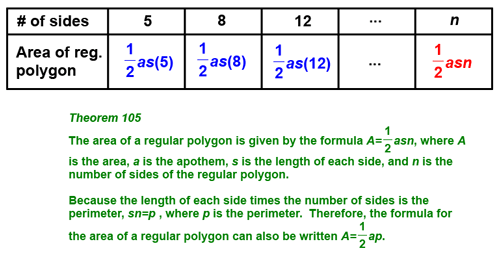 |
| you are here > Class Notes - Chapter 11 - Lesson 11-5 | |||||||||||||||||||||||||||||||||||
|
Areas of Regular Polygons - Lesson 11-5 Today we started by deriving a formula for the area of an equilateral (regular) triangle. If you start with an equilateral triangle with side length s:
And then do the standard procedure for finding the length of the altitude (love those 30-60-90 triangles!),
you are then able to use the formula for the area of a triangle to derive a new formula
which can be summarized as follows:
Next, we can generalize an area formula for all regular polygons. To start, we need to define the radius and the apothem of a regular polygon:
If we look at a pentagon, you should be able to see how the formula for its area would be as shown in the table below:
The same can be said for an octagon
and a dodecagon.
In conclusion, we can derive the general formula to find the area of any given regular polygon:
|
|
||||||||||||||||||||||||||||||||||
